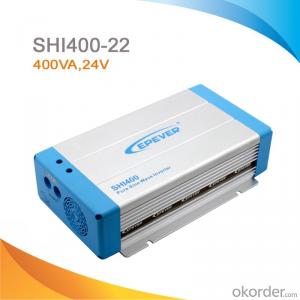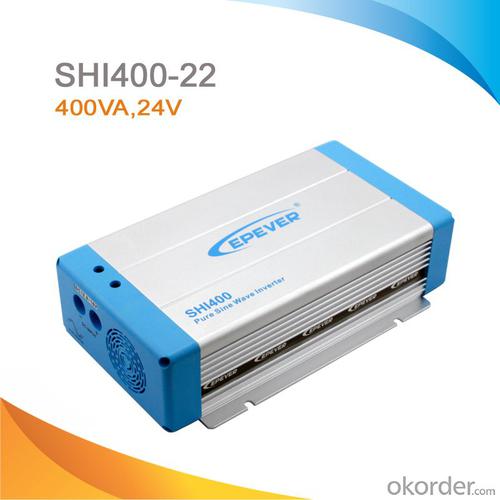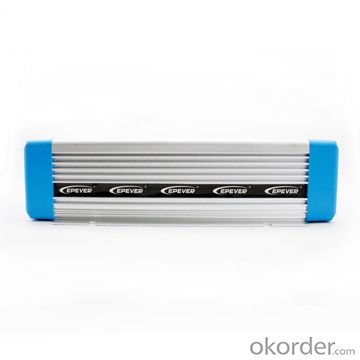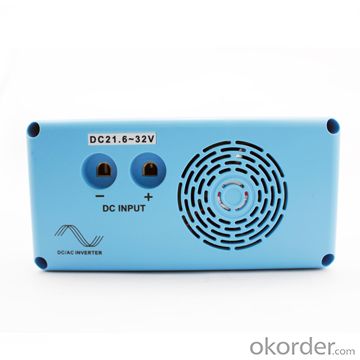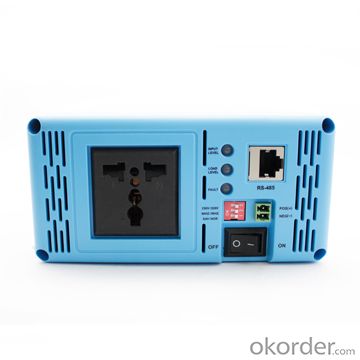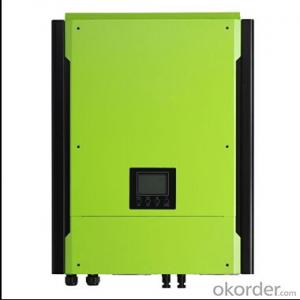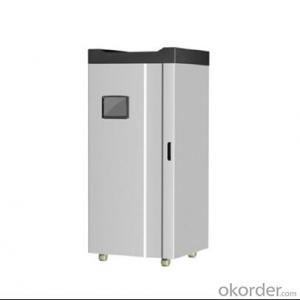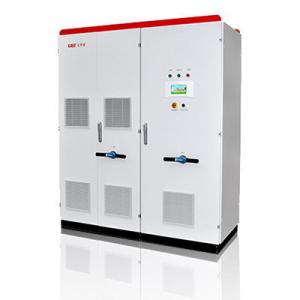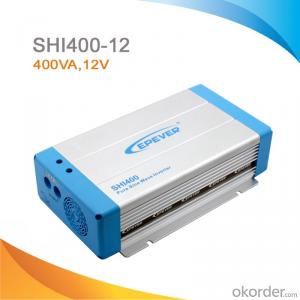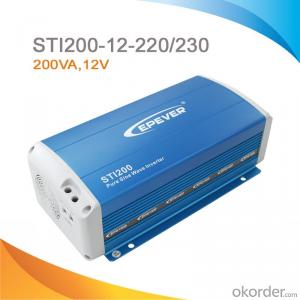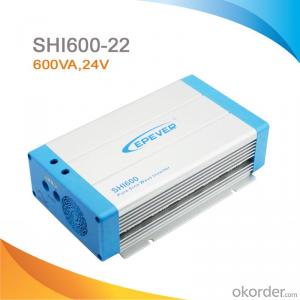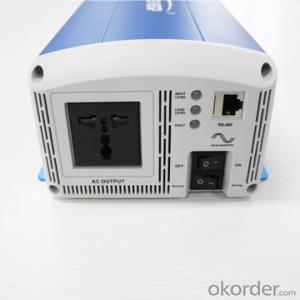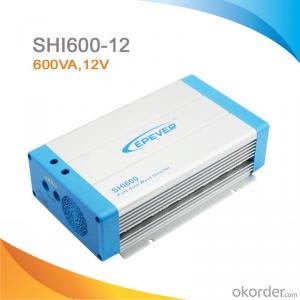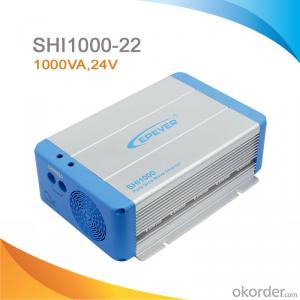35KW Solar Inverter - Off-grid Pure Sine Wave Solar Inverter/Power Inverter 400W, DC 24V to AC 220V/230V SHI400-22
- Loading Port:
- China Main Port
- Payment Terms:
- TT or LC
- Min Order Qty:
- -
- Supply Capability:
- -
OKorder Service Pledge
OKorder Financial Service
You Might Also Like
SHI series is a pure sine wave inverter which can convert 12/24/48Vdc to 220/230Vac 50/60Hz based on full digital and intelligent design. It features high reliability, high efficiency, concise outline, small volume, easy installation and operation. The inverter can be applied in many fields, such as household appliances, electric tools and industrial devices etc, especially for solar photovoltaic power system.
True sine wave inverters produce power that is either identical or sometimes slightly better to power from the public utility power grid system. The power wave when viewed through an oscilloscope is a smooth sine wave.
Features:
·Input & output fully isolation
·Adoption of advanced SPWM technology, pure sine wave output
·Dynamic current loop control technology to ensure inverter reliable operation
·Wide DC input voltage range
·The output voltage and frequency can be switched
·Low output harmonic distortion(THD≤3%)
·LED indicators for input voltage range, load power range, normal output & failure state
·Optional energy saving mode
·Wide working temperature range (industrial level)
·Continuous operation at full power
Protections:
·Output short circuit protection
·Overload protection
·Input low voltage protection
·Input over voltage protection
·Overheating protection
·Inverter abnormal protection
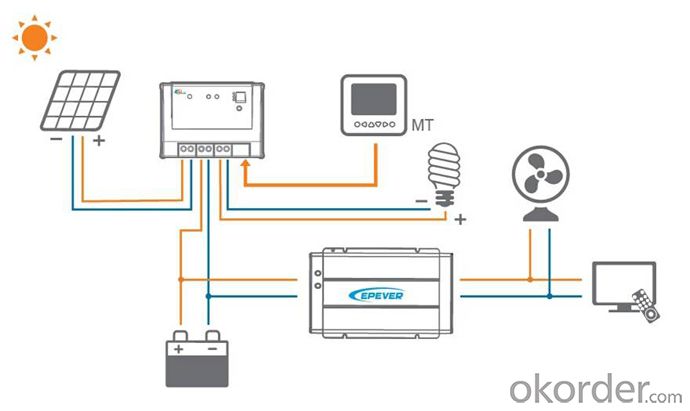
Specification:
Types | SHI400-12 | SHI400-22 | SHI600-12 | SHI600-22 | SHI1000-22 | SHI1000-42 |
Nominal Battery Voltage | 12V | 24V | 12V | 24V | 24V | 48V |
Input Voltage Range | 10.8~16Vdc | 21.6~32Vdc | 10.8~16Vdc | 21.6~32Vdc | 21.6~32Vdc | 43.2~64Vdc |
No Load Current | ≤0.8A | ≤0.45A | ≤0.7A | ≤0.45A | ≤0.45A | ≤0.35A |
Output Wave | Pure Sine Wave | |||||
Output Voltage | 220Vac±3% / 230Vac±10% | |||||
Continuous Power | 400W | 600W | 1000W | |||
Power 10 sec | 600W | 900W | 1500W | |||
Power 1.5 sec | 800W | 1200W | 2000W | |||
Surge Power | 900W | 1350W | 2250W | |||
Frequency | 50/60Hz±0.2% | |||||
Distortion THD | ≤ 3% (resistive load) | |||||
Efficiency at Rated Power | ≥91% | ≥92% | ≥91% | ≥92% | ≥93% | ≥93.5% |
Max. Efficiency | ≥92% | ≥93% | ≥93% | ≥94% | ≥94% | ≥94% |
Terminal | 16mm2 | 25mm2 | 25mm2 | |||
Dimensions | 280×166×74.3mm | 295×186×82mm | 295×208×98mm | |||
Installation | 150×158mm | 150×178mm | 150×200mm | |||
Hole Size | Φ5mm | Φ6mm | Φ6mm | |||
Net Weight | 1.8kg | 2.3kg | 3.3kg | |||
Working Temperature | -20℃~ +50℃ | |||||
Storage Temperature | -35℃~ +70℃ | |||||
Humidity | < 95% (N.C.) | |||||
Altitude | < 5000m(Derating to operate according to IEC62040 at a height exceeding 1000m) | |||||
Insulation Resistance | Between DC input terminals and metal case: ≥550MΩ; Between AC output terminals and metal case: ≥550MΩ. | |||||
Dielectric Strength | Between DC input terminals and metal case: Test voltage AC1500V, 1 minute Between AC output terminals and metal case: Test voltage AC1500V, 1 minute | |||||
- Q: What is the impact of temperature on the performance of a solar inverter?
- The impact of temperature on the performance of a solar inverter is significant. High temperatures can cause the efficiency of the inverter to decrease, resulting in a reduction in power output. This is due to the fact that electronic components inside the inverter operate less efficiently at high temperatures. Additionally, elevated temperatures can lead to increased thermal stress on the inverter, potentially shortening its lifespan. Therefore, it is important to carefully consider the temperature conditions and provide adequate cooling or ventilation for optimal performance and longevity of the solar inverter.
- Q: Can a solar inverter be used with a generator?
- Yes, a solar inverter can be used with a generator. In fact, using a solar inverter in conjunction with a generator can provide a more reliable and efficient power supply. The solar inverter can convert the DC power generated by the solar panels into AC power, which can then be used to power various appliances and devices. When the solar panels are not producing enough electricity, the generator can kick in to provide additional power, ensuring a continuous and stable energy supply.
- Q: Can a solar inverter be used in a three-phase power system?
- Yes, a solar inverter can be used in a three-phase power system. In fact, three-phase solar inverters are commonly used in commercial and industrial applications where three-phase power is utilized. These inverters convert the DC power generated by solar panels into AC power that can be seamlessly integrated into the three-phase power grid.
- Q: What is the maximum DC voltage that a solar inverter can handle?
- The maximum DC voltage that a solar inverter can handle varies depending on the specific model and manufacturer. However, in general, most solar inverters can handle DC voltages up to around 1000V.
- Q: Does a solar inverter require any additional cooling or ventilation?
- Yes, a solar inverter typically requires additional cooling or ventilation to operate efficiently and prevent overheating. The heat generated during the conversion of DC to AC power needs to be dissipated to maintain optimal performance and prolong the lifespan of the inverter.
- Q: How does a solar inverter handle voltage fluctuation during cloud cover?
- A solar inverter handles voltage fluctuation during cloud cover by continuously monitoring and adjusting the output voltage to compensate for the reduced solar energy input. This is typically achieved through advanced control algorithms that optimize the inverter's power output to maintain a stable voltage level, ensuring a smooth transition during periods of cloud cover and minimizing any disruptions to the electrical system.
- Q: Can a solar inverter be used with a three-phase power system?
- Yes, a solar inverter can be used with a three-phase power system. In fact, many solar inverters are designed to work specifically with three-phase power systems. These inverters convert the DC power generated by solar panels into AC power that can be used by the three-phase electrical grid.
- Q: How does a solar inverter prevent islanding?
- A solar inverter prevents islanding by constantly monitoring the grid connection and ensuring there is a stable and continuous power supply. If the grid connection is lost or becomes unstable, the inverter immediately shuts down to prevent the formation of an island, where it would continue to supply power to the disconnected grid. This feature ensures the safety of utility workers and prevents damage to equipment during grid maintenance or emergencies.
- Q: What are the main components of a solar inverter?
- The main components of a solar inverter typically include the DC input, MPPT (Maximum Power Point Tracking) system, inverter circuit, transformer, and AC output.
- Q: Can a solar inverter be installed indoors or outdoors?
- A solar inverter can be installed both indoors and outdoors, depending on the specific requirements and preferences of the installation. However, it is essential to consider factors such as available space, ventilation, temperature regulation, and protection from environmental elements when deciding on the installation location.
Send your message to us
35KW Solar Inverter - Off-grid Pure Sine Wave Solar Inverter/Power Inverter 400W, DC 24V to AC 220V/230V SHI400-22
- Loading Port:
- China Main Port
- Payment Terms:
- TT or LC
- Min Order Qty:
- -
- Supply Capability:
- -
OKorder Service Pledge
OKorder Financial Service
Similar products
Hot products
Hot Searches
Related keywords
